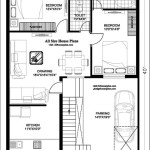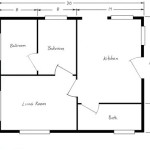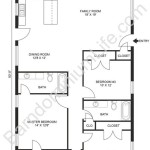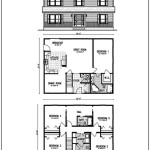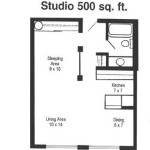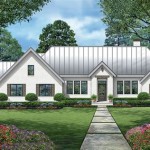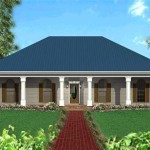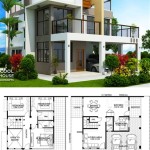Building Plans For Residential Houses: A Comprehensive Guide
Building a house is a significant undertaking, requiring meticulous planning and consideration of various factors. Building plans, also known as architectural blueprints, are essential documents that outline the design, structure, and functionality of a residential building. They serve as a roadmap for construction, ensuring that the final product meets the homeowner's vision and complies with local building codes. This article provides a comprehensive guide to understanding building plans for residential houses, covering key aspects, elements, and the importance of their role in the construction process.
Understanding the Basics of Building Plans
Building plans are detailed drawings that depict the layout of a house from different perspectives. They include floor plans, elevations, sections, and details. Floor plans show the arrangement of rooms, walls, doors, windows, and fixtures on each level. Elevations present exterior views of the house from different angles, showcasing the facade and roofline. Sections provide a cross-sectional view, revealing the construction materials and structural elements. Details offer magnified views of specific components, such as stairs, windows, or plumbing fixtures.
Key Components of Building Plans
Building plans for residential houses typically include the following essential components:
- Site Plan: This plan depicts the property boundaries, existing structures, utilities, landscaping, and the proposed location of the house on the lot.
- Floor Plans: These plans showcase the layout of each level, including rooms, walls, doors, windows, and fixtures. They also indicate the dimensions of each space and specify the types of flooring and finishes.
- Elevations: Elevations provide exterior views of the house from different sides, showing the facade, roofline, and exterior finishes.
- Sections: Sections offer a cross-sectional view of the house, revealing the construction materials, structural elements, and the relationship between different levels.
- Details: Details provide magnified views of specific components, such as stairs, windows, doors, and plumbing fixtures. They specify materials, dimensions, and installation procedures.
- Specifications: Specifications are written descriptions of the building materials, finishes, and construction methods used in the project. They ensure consistency and quality throughout the construction process.
Importance of Building Plans
Building plans play several crucial roles in the construction process:
- Communication and Collaboration: Plans serve as a visual communication tool between architects, engineers, contractors, and homeowners. They facilitate a clear understanding of the design, construction details, and project scope, ensuring everyone is on the same page.
- Construction Guidance: Building plans provide detailed instructions for the construction team, outlining the layout, materials, and methods required to build the house. They ensure that the final structure meets the homeowner's vision and conforms to local building codes.
- Budgeting and Cost Estimation: By providing a precise breakdown of materials, labor, and construction methods, building plans enable accurate cost estimations. This helps homeowners plan their budget effectively and avoid unexpected expenses.
- Permit Approval: Building plans are essential for obtaining permits from local authorities. They ensure that the proposed construction meets safety regulations and adheres to zoning ordinances.
- Quality Control: Plans serve as a reference point for quality control throughout the construction process. They ensure that the construction team stays true to the design and specifications.
Building plans are indispensable for a successful residential construction project. They provide a roadmap for construction, ensuring quality, safety, and compliance with regulations. Understanding the key components and importance of building plans empowers homeowners to make informed decisions and manage their projects effectively.

House Plans Home Residential

Design Your Own House Floor Plans Roomsketcher

6 Y Residential Building Plans And Section Two Bedrooms Per Unit

Design Your Own House Floor Plans Roomsketcher

Diffe Types Of Residential Building Plans And Designs

Design Your Own House Floor Plans Roomsketcher

Free Residential Home Floor Plans Evstudio

Half Of The Symmetrical Floor Plan Residential Building Scientific Diagram

Diffe Types Of Residential Building Plans And Designs

Diffe Types Of Residential Building Plans And Designs

